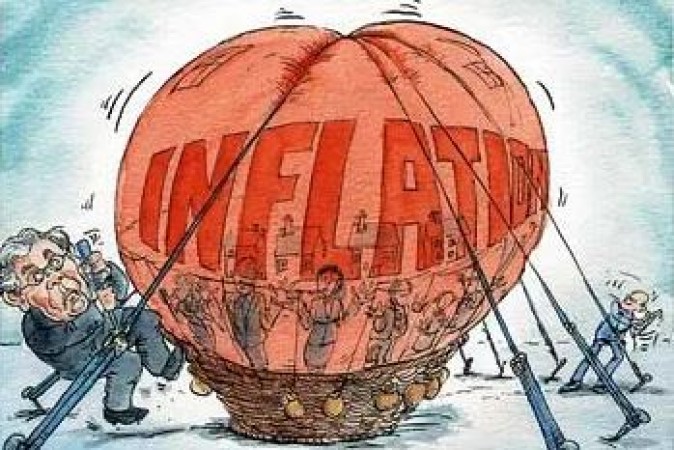
Inflation is a crucial economic concept that affects the purchasing power of consumers and impacts various aspects of the economy. Understanding inflation is essential for individuals, businesses, and policymakers alike. In this article, we will explore what inflation is, its causes, how it is measured, and most importantly, how it affects the purchasing power of consumers.
Understanding Inflation
1.1 What is Inflation?
Inflation is the sustained increase in the general price level of goods and services in an economy over a period of time. When inflation occurs, each unit of currency buys fewer goods and services, reducing the purchasing power of money.
1.2 Types of Inflation
There are different types of inflation, each with varying causes and effects. The main types of inflation are demand-pull inflation, cost-push inflation, built-in inflation, and hyperinflation.
1.3 Causes of Inflation
Inflation can be triggered by several factors, including an increase in consumer demand, rising production costs, expansionary monetary policies, and external factors like supply chain disruptions or geopolitical events.
Measuring Inflation
2.1 The Consumer Price Index (CPI)
The Consumer Price Index (CPI) is a key metric used to measure inflation. It tracks the changes in the prices of a basket of goods and services commonly purchased by households, providing insights into the cost of living.
2.2 The Producer Price Index (PPI)
The Producer Price Index (PPI) measures the average change in prices received by domestic producers for their output. It reflects inflationary pressures at the producer level, which can ultimately impact consumer prices.
Effects of Inflation
3.1 Impact on Purchasing Power
Inflation erodes the purchasing power of money over time, reducing the amount of goods and services that can be purchased with the same amount of currency.
3.2 Cost of Living Adjustments
Cost of living adjustments (COLAs) are made to wages, benefits, and pensions to offset the impact of inflation on the standard of living.
3.3 Wage and Price Spiral
Inflation can lead to a wage and price spiral, where rising prices push for higher wages, and higher wages, in turn, lead to further price increases.
Inflation and Investments
4.1 Inflation-Protected Securities (TIPS)
Inflation-Protected Securities (TIPS) are investment vehicles that provide protection against inflation by adjusting their principal value based on changes in the CPI.
4.2 Gold as an Inflation Hedge
Gold has historically been seen as a hedge against inflation, as its value tends to rise during times of economic uncertainty and currency devaluation.
Controlling Inflation
5.1 Monetary Policy
Central banks use monetary policy tools like interest rates and open market operations to control inflation and stabilize the economy.
5.2 Fiscal Policy
Governments can implement fiscal policies like taxation and public spending to influence inflation rates and economic growth.
Inflation's Global Impact
6.1 Exchange Rates and Inflation
Inflation can impact exchange rates, affecting the competitiveness of exports and imports in international trade.
6.2 Hyperinflation in History
Hyperinflation, an extreme form of inflation, has occurred in various countries throughout history, leading to economic instability and social turmoil.
Inflation vs. Deflation
7.1 Deflationary Pressures
Deflation is the opposite of inflation, where the general price level decreases over time. It can lead to economic challenges, such as reduced consumer spending and investment.
7.2 The Impact on Borrowers and Savers
Deflation can have contrasting effects on borrowers, who benefit from declining prices, and savers, who experience increased purchasing power.
Inflation and Debt
8.1 The Effect on Borrowers
Inflation can erode the real value of debt, making it advantageous for borrowers as they repay loans with less valuable money.
8.2 The Effect on Lenders
On the other hand, lenders may suffer from inflation, as they receive repayments with money that has lost value over time.
Inflation's Impact on Businesses
9.1 Cost-Push Inflation
Cost-push inflation occurs when production costs rise, leading to increased prices for goods and services.
9.2 Demand-Pull Inflation
Demand-pull inflation happens when excessive consumer demand outpaces the supply of goods and services, driving prices upward.
Inflation and Retirement Planning
10.1 The Importance of Considering Inflation
Inflation is a critical factor to consider in retirement planning, as it can significantly affect the purchasing power of retirement savings over time.
10.2 Inflation and Social Security
Inflation adjustments are made to Social Security benefits to help retirees maintain their purchasing power.
Protecting Against Inflation
11.1 Diversification of Investments
Diversifying investments can help mitigate the impact of inflation and reduce overall portfolio risk.
11.2 Real Estate as a Hedge
Real estate can be an effective hedge against inflation, as property values and rental income may rise with inflation.
Inflation Expectations and Economic Outlook
12.1 Impact on Interest Rates
Inflation expectations influence interest rates set by central banks, affecting borrowing costs for consumers and businesses.
12.2 The Role of Central Banks
Central banks play a crucial role in managing inflation expectations and maintaining price stability in the economy.
Inflation is a complex economic phenomenon with significant implications for individuals, businesses, and governments. Understanding its causes, effects, and ways to protect against it is essential for making informed financial decisions and planning for a secure future.
What is Blockchain Technology and Its Applications?
Mastering Debt Management: Tips for a Debt-Free Life
Investment Strategies Uncovered: How to Secure your Financial Future